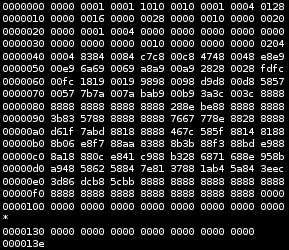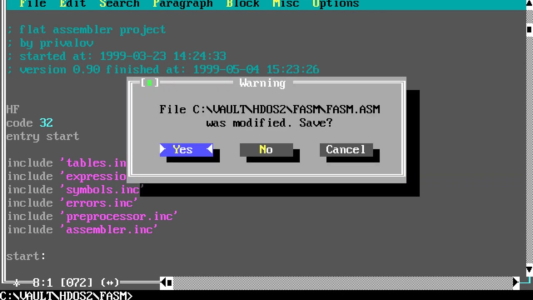Assembly language
Introduction to Assembly Language
Assembly Language is a Low-Level Programming Language. Assembly language commands are very close to machine code and, as a result, to hardware. For this reason, learning assembly language and its applications are difficult to limit to certain areas. Learning assembly language is used to learn the mechanics of all computer components from the central processing unit (CPU) to memory.
It should be noted that although most programmers today use high-level programming languages such as Python, Java, and Go to develop a variety of software, assembly language is usually included in the rankings for programming languages provided by various centers. It is one of the top 20 languages with applications and the labor market in the world. However, it is not usually in the top 10 programming languages in terms of application and labor market.
To better understand the place of assembly language among other languages in terms of syntax proximity to hardware, it should be said that assembly language is higher than machine language and lower level than languages like Pascal and C / C ++. Therefore, code is written in assembly language also needs to be converted to machine-executable code, or machine language. In computers, there is something called an assembler that helps convert assembly code into machine-executable code.
What is the language of the machine?
Machine language is a set of instructions used to code machine, or in fact, direct coding for computer hardware. A machine language is a low-level programming language that is used directly to control a computer’s central processing unit. It is noteworthy that machine language is the lowest level of programming languages and even lower than assembly. Being low means being close to the hardware, not human language.
Each command in machine language causes the CPU to perform a specific task. These tasks include loading, storing, jumping, or performing operations in the Arithmetic Logic Unit on one or more units of data instability or memory. Machine language is a purely “numerical” language. That is, machine language codes are sequences of numbers that have a specific meaning for hardware and force electronic components to do a specific job. One of the most important goals of machine language is to execute the program written in it in the fastest possible time, and therefore it has this level of proximity to the hardware.
Machine language can be considered the lowest level of presentation for a program compiled by a compiler of compiled languages or an assembly program translated by an assembler. In fact, machine language is a completely low-level language that is completely dependent on hardware.

If programming is done directly with machine code, bits can be managed directly and numeric addresses can be calculated. In addition to being tedious and complicated, this can lead to error-prone code. Because of this, programs are rarely written in machine language. But sometimes machine language is used to troubleshoot low-level code, patch the program (especially when the assembler source is not available), and disassemble the assembly language.
What is assembly language?
Assembly language is a low-level, close-to-hardware programming language that is higher than machine language and lower than languages such as C. The commands of this language are translated into machine code by the assembler and then executed.
In computer programming, the assembly language or assembler language, abbreviated ASM, is a low-level programming language that has a very strong relationship between its instructions and machine code architecture. Because the assembly language depends on the machine code instructions, each assembly language is designed exactly for specific computer architecture. Assembly language is also called the “Symbolic Machine Code”. The assembly code is converted into executable machine code using a utility software called an assembler. The process of converting assembly code into executable machine code is called assembly. The term assembler was first coined by Maurice Wilkes, David Wheeler, and Stanley Gill in 1951 in The Preparation of Programs for an Electronic Digital Computer. of Programs for an Electronic Digital Computer) was used.
What is the difference between a car language and an assembly language?
The main difference between machine code and assembly language is that machine code contains binary codes that can be executed directly by a computer. While assembly language requires software called assembler to convert machine code. Machine language is the lowest level of programming languages and assembly language is a low-level programming language. In the following, the assembly language is discussed as a synthesis of the assembly language.
What is the syntax of the assembly language?
Assembly language uses mnemonics to provide any low-level or opcode instructions, as well as typically architectural stability, flags, and more. Many operations in assembly language require one or more operands to form a complete instruction. Most assemblers are allowed to use named constants, registers, and tags to execute programs and allocate memory, and can compute expressions for operators. Therefore, programmers do not need to do tedious repetitive calculations, and assembler programs are more readable than machine code.
Why is assembly language useful?
Assembly language helps programmers write human-readable code that most closely resembles machine language. Machine language is difficult to understand and read because it is a sequence of numbers. Assembly language helps to provide complete control over everything a computer does.
Why learn assembly language?
Whether people learn assembly or not depends on what goals the person is pursuing. Many developers answer “no” to this question because they now use high-level programming languages that are more engaging to work with and, of course, have larger capabilities, capabilities, and labor markets. There are two main reasons for learning assembly language. One is that one intends to use it to work directly with hardware, and the other is that one intends to learn computer operation at a basic level.

Although most people today tend to learn high-level programming languages and develop programs using them, learning assembly language is still an important issue for programmers. Learning assembly language helps people take full control of the system and its resources. By learning assembly language, the programmer is able to write code to access registers and can retrieve memory addresses from pointers and their values.
What is an assembler?
An assembler is simply software that converts code written in assembly language into machine code. In essence, assembler software converts code written in assembly language into Object Code, which is a machine language command (ie digits 0 and 1) or an interface language such as a stability transfer language. This is done by translating combinations of reminders and assembly commands for various operations or addressing modes into their numerical equivalents in machine codes 0 and 1.

The target code provided by the assembler generally contains an operation code (Opcode | Opec Code) as other bits and control data. The assembler calculates fixed expressions and provides symbolic names for allocating memory and other entities. The use of symbolic references is a key feature of assemblers, which avoids tedious calculations and manual address updates after program edits. Some assemblers may be able to perform simple types of optimizations specific to the instruction set. A good example of this is x86 assemblers, which are made by different manufacturers. Assemblers called jump-sizing are often able to replace the jump command (long jumps are replaced by short or connected jumps) in any number of passes on request.
What is the current use of assembly language?
From a practical point of view, only a handful of the world’s engineers and computer scientists use assembly language, and today most applications are written using high-level programming languages. In 2017, however, the Tube Index for Programming Languages ranked Assembly 11th, ahead of Visual Basic. In 2021, according to the Tube index, assembly is still among the top 20 most popular programming languages in the world. Here are some areas where people use assembly language:
- Operating systems
- Hardware
- Device drivers
- Compiler design
- Built-in systems
- Advanced encryption
- Theoretical Computer Science
- Understand the mechanism of computers












